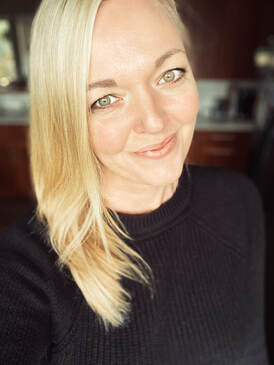 I opened this journal file on my computer this morning, not really knowing when I had written last. Prior to pausing my regular writing and blogging, I was in a good rhythm of journaling almost every day. Throughout the struggles I experienced medically in 2019, I wrote consistently and shared as much as I could on my blog and social media. But then in early 2020, I started helping my good friend Freddy Sandoval write his book on mental training and for about six months I shifted my attention and all the time and energy I had for writing towards that project. By the time we were finished, I think I was just ready to unplug for a while—and here we are, over a year and a half later. So much has changed. Physically speaking, I am in the most peaceful point in my journey in over a decade. In a completely unexpected turn of events, my shunt completely failed in the late spring of 2020, and my body has been able to manage my hydrocephalus solely with my ETV ever since. There was a big adjustment period, but slowly I was able to stabilize and handle the difference in how my head felt. Everything just felt different, and somewhat foreign. Even though I was functioning – working, staying active, and walking a few miles almost every day, I was still feeling physically sick and having some unexplained symptoms. A few months later, it was discovered that the abandoned distal catheter from my shunt had perforated my bowel and had to be removed in an emergency surgery. As shocking as it was to discover that the catheter was in my bowel, it was even more alarming to hear that they believe that it had been there since the time of placement (during a previous revision surgery about 16 months prior). With this new information, so many symptoms that I had been fighting for so long made total sense, and it felt like a giant weight had been lifted off my shoulders. My medical team is amazing and has been so dedicated to getting me through everything I’ve been through, especially in recent years. However, I was starting to feel like a broken record – constantly telling them how sick I was feeling, and that even though it looked like I was doing ok on the outside, I was suffering inside. Little did we know that my body was fighting a low-grade infection caused by the fact that several inches of my catheter were literally inside my small intestine. Once we knew what was going on, it finally allowed for a solution and true recovery. I was incredibly relieved and threw myself into full restoration mode – which included a mental break from thinking about being sick all the time. I needed some time to pull back from sharing everything, and just be. I’ve spent the past year focused on work, my relationship, and my family & friends. If you have hydrocephalus or another condition that is ongoing, you understand that it never truly goes away. There isn’t a day that I don’t have to think about managing my headaches, pressure, and all the trauma-related symptoms that my nervous system has after so many surgeries. But I did make the choice to take a break from blogging about it for a while. It’s given me a chance to reset my rhythms in life and focus more attention on some exciting new things. In 2022, I would like to share a little more, from a different lens. I believe there are a lot of hydrocephalus patients and family members who go through similar ups and downs – a time when things are very difficult and there is a constant battle, but then there is a period of quiet and better health. Maybe there are a series of surgeries strung together in a short amount of time, perhaps coupled with an infection, like mine. Or perhaps it’s a few months or a few years of increased pain. But then – almost unexpectedly - everything settles down, and things get better… but you still feel stuck in the reality of those difficult times. Life gets easier to navigate, but you still struggle with what happened. The knowledge that it happened feels like the knowledge that it could happen again at any time. The memories of how hard it was haunt you and make you worried that it could be even worse next time. Honestly, this kind of trauma isn’t much different than what people experience going through any major life-changing challenge. Any personal loss, injury, or unexpected change calls for a similar type of healing process. There is a time when the wounds are fresh and need immediate and constant attention. All your energy goes into just making the next step, getting through the next day or week or month. Everything hurts. But then the wounds start to heal. They scab over, and things are still rough, but they start to sting a little less. You begin to make it through whole days without constantly thinking about the pain and how to manage it. Eventually everything seals back up, and you are past the worse part. But friends, at that point you are faced with the choice to live in the memory of what happened, or face forward and move boldly into your future. It’s the hardest thing, and the best thing – to look at the difficulties you’ve been through, acknowledge them, and then shift your focus. I know – because not only have I been through the many challenges that hydrocephalus has brought (repeatedly), but because I have been through several other painful and life-shaping events and losses. Choosing to live and love between the madness of what I’ve been through is a daily decision for me. And I’m nowhere near perfect. When it’s hard and I fail, I start over. Sometimes I start over multiple times a day. And I’m grateful for the opportunity and grace to do so. My goal for this next season is to write about how I’m continually challenging myself to move forward in the wake of the difficulty and trauma of the past several years. I feel like that’s what I can to contribute to this community right now. I’ve always been raw and open about how hard things have been, but I’ve also always shared where I turn to find the strength and anchor I need. I hope that this will encourage someone out there to keep fighting, and to hang tight when the storm rages. Cheers, friends. Today we start a new chapter. Here’s to the relentless pursuit of everything that’s important. Stay in the arena, Amy
3 Comments
 8/13/19 My alarm clock went off at 5am this morning for the first time in about a month. As the music started to play, I rolled over in bed and listened to the lyrics. There are times when life seems bigger than you, and the world comes crumbling down. The strength in your heart will see you through and become a jewel in your crown. Don’t chase the past, because you can’t change a thing It’s gone, there’s nothing to do. Don’t count on the future, it’s only a dream Today’s when life starts new This is the first verse of the song Keep On Walking, which is a song that was written for me by my parents and Chris Arellano in 2017 when I was going through a particularly difficult time. I have it play as my alarm on my phone every morning as a reminder that in order to get past the hard times, you have to be willing to walk through them. I love this song, but don’t get me wrong – it’s still my alarm clock! Most of the time I reach over and stop the music as soon as it starts. But then there are the days when I let the whole song play, and I listen to the words and smile. Once the music stopped, I got up and walked into the kitchen to get some coffee. On the way, I grabbed my laptop and reached into the jar I have on my desk. The jar is full of scraps of paper with writing prompts, waiting for me like little fortune cookie papers. All of the prompts are from a list that I made several months ago for my writing coach. Each statement starts with the words “I have found peace…” I didn’t look at the piece of paper I chose until I sat down with my coffee. I have found peace medically by establishing a baseline in my quality of life and creating routines that support that baseline. It seems fitting that I chose this prompt today – on the first day that I am attempting to return to my usual weekday morning routine. I used to hate mornings, but a couple of years ago I changed my daily schedule to include a couple of hours to myself early in the morning before work. The house is quiet at 5am, and I can spend some uninterrupted time praying, meditating and studying. Sometimes I read, and sometimes I write. It’s become a routine that I value so much, because it starts the day with the same clear-minded peace regardless of how I feel physically. I do my best to keep this time consistently even when I am struggling – and it’s one of the first things I try to get back when I have surgery or a period of trouble with my shunt. The statement “I have found peace medically…” is an interesting one for me right now. After the summer I’ve had, I feel like an embattled warrior that has just come back from a bloody battle. But there’s no question that I still feel peace – even medically. Keeping my routines does a lot for me mentally, but physically I have found that it’s the one thing that really soothes my nervous system trauma and allows for better rest and faster healing. Human bodies crave rhythm. Without getting into too technical of an explanation, the need for rhythm has a lot to do with the relationship between the vagus nerve system and the heart and lungs. We are created to find natural intervals in time, seasons, and movement. It’s why music is so healing, and swinging on a swing set calms us down. It’s why breathing rhythmically can stop feelings of anxiety and help the nervous system get into a parasympathetic (resting) response. Several years ago, I started studying the effect of trauma on the central nervous system (CNS). Under the care of a couple of really talented therapists, I was able to better understand the damage that has been done to my own CNS through repeated surgeries and the roller coaster of pressure and pain created by hydrocephalus. I believe that understanding this trauma and how it physically manifests in the body has allowed me to create patterns and rhythms in my life that have assisted my body in recovering from all the continuing trauma. And truthfully, this year has been the hardest for me to date – so never has it been more crucial to my wellbeing. I feel like I’m reminded every day, and sometimes those reminders come in unexpected ways. On one of my first days back to work in July, I was driving to a job site and listening to a podcast called The Pivot, with Andrew Osenga. I love listening to this podcast, because Andrew interviews people (mostly musicians) who have gone through seasons of great change in their life, and instead of falling apart, they have chosen to pivot – and go another direction. I find the episodes to be so encouraging. That particular morning, I was listening to an episode with Charlie Peacock, an accomplished record producer, musician and artist. Most of the discussion was about his career in music, but then he started talking about the point in his life when he was forced to pivot. He developed a condition called central sensitization syndrome, where essentially the CNS gets stuck in a sympathetic (fight or flight) response. Even though it’s not the same as what I have experienced, as I listened to him describe his symptoms and how it changed his life I couldn’t stop the tears from running down my face. I was so exhausted, and I hurt so bad from everything I was going through. Just days before, I had been in the hospital for almost three weeks. I was desperately seeking my new normal, and I was struggling to find that balance in light of everything I was going through physically, mentally, and emotionally. If you are going through a difficult season in your life, I want to encourage you. Maybe you are battling hydrocephalus, or maybe you are just going through a big life change in which you are needing to pivot. I encourage you to find one tiny thing every couple days that you can do daily- preferably at the same time each day. I actually write these things down as I add them to my routine. It’s hard, and it takes dedication. But as the weeks go by, you will find your rhythm again. We are all wandering through this life, finding our way as we go. I’ve learned just enough about neuroscience to know that so much of the trauma can be healed, if I am diligent and patient. During this process I rely heavily on my faith – it comforts me to know I am never alone on this path. As my body heals, so does my heart. Stay strong, my friends. Stay beautiful. Stay in the arena. Peace, Am 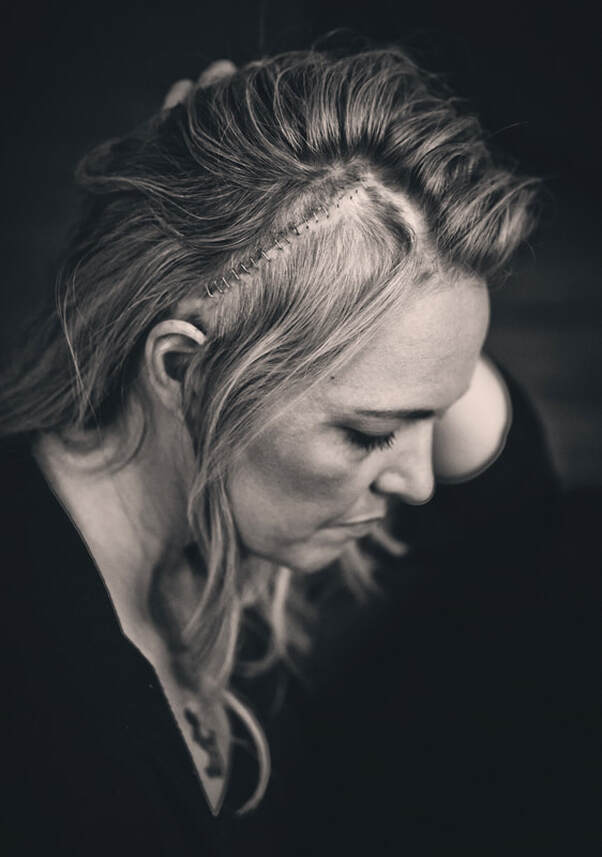 It’s a quiet Sunday afternoon. I’m listening to Jackson Browne and reading back through some journaling I’ve done in the past few months. When I’m sick and having surgeries I definitely find that I write less. Instead, I've made an effort to make short journal entries documenting the day to day events these past few months - as crazy things were unfolding in regards to my health. It feels kind of raw to read about all the little things I have already forgotten about… and I suppose that’s why journaling is so valuable. The days are filled with important moments, and even the painful moments are important. Suffering is meaningless, but the courage that we bring to our suffering gives it meaning. -Victor Frankl I got home from the hospital a little over a week ago. I posted on social media during the 16-day hospital stay and three surgeries, and then for several days once I was home and starting my recovery. During that time, I received so many amazing messages of encouragement and support and I know there were people praying for me all over the world. It was so humbling and comforting. Words can’t describe how it feels, but I am incredibly grateful. Thank you. When I started this blog, I made a commitment to share my story with the public – to support other patients and help educate those who were interested in knowing about my life with hydrocephalus. Sometimes I share a lot of detail about the medical aspect of my surgeries, and other times I feel it’s less important to give specifics. At the end of the day, every single patient with hydrocephalus can have a different experience every single time their shunt malfunctions. That’s just the nature of the condition. So instead of telling you each thing that happened during those 16 days, what I want to share is what I learned during this crazy time – in hopes that those things might help others. Here’s what I learned: A shunt infection doesn’t always look the way you expect it to. I’ve never had a shunt infection before, but just like so many hydrocephalus patients and parents out there, it has been my biggest fear. I’ve always heard the classic symptoms to be fever, headache, and vomiting… and that is usually the case. However, my initial symptoms manifested differently, and even though my medical team jumped right on them, I guess I just either ignored the possibility or was hopeful that it would turn out to be nothing to worry about. It wasn’t until the doctors confirmed in the hospital what they had suspected all along, that the brevity of the whole thing sunk in. The first symptom that showed up for me was a redness and welting directly over my shunt track on my abdomen. I immediately let my neurosurgeon know about it when it showed up, even though it was not accompanied by vomiting, fever, or headache. I actually was feeling pretty good at the time that this all started. I went through two different courses of oral antibiotics, and over those weeks, the severe headache did eventually develop. However, it wasn’t until I was in the hospital with the full-blown infection and my shunt externalized that I had a fever – and I never vomited. Going forward, I will understand that even symptoms that aren’t textbook can lead to a shunt infection. It isn’t going to change the way I live my life – it’s just a new reality. My hospital has an RV parking area with full hook ups for family members of patients. Shunt infections often result in multiple surgeries and a long hospital stay. I can’t say enough about the impact that these difficult and frankly inconvenient episodes cause to a family unit or support system of a patient. I am truly lucky that even as a 39-year-old adult patient, I have an incredible mom who accompanies me to every surgery and hospital stay, regardless of how long. I acknowledge that not everyone has that luxury. But during these hospital visits, my mom and I always try to figure out one or two little things that might make the whole thing just a little easier – even if they are small. It’s our tradition to go over these things on our 3-hour drive home from the hospital. I ask, “What were the game-changers, Mom?” As we made the beautiful drive through the sunny Cascade mountains this time, so happy to finally be heading home after almost a month, we came up with this one. St. Charles is a really nice hospital, and my mom usually stays in the room with me – as we only spend one night, maybe two, on the average shunt surgery trip. But on the 4th or 5th night of this stay, just as I was going in for another surgery and then being transferred into the ICU, our favorite nurse on the Neuro floor mentioned to my mom that the hospital has an area of the parking lot with full RV hookups, specifically for families of patients who travel more than 50 miles. My dad was coming over for my surgery, so he was able to bring my mom their RV, and that provided a much more comfortable way for my parents to stay close to me. I’m not saying this is what you have to do, but just that sometimes focusing on the little “game-changers” make all the difference in these otherwise terrible experiences. Some of our game-changers in the past have been as small as identifying my favorite milkshake on the patient room service menu or remembering noise canceling headphones for my mom so she can rest easier in the room at night. It’s important to acknowledge the little things and constantly learn, as you face forward. Do the things that are actually within your control… no matter how small. There were several days during this process where I was so sick that all I could concentrate on was getting through each hour. Within those hours, I had to choose to stay focused on the very few items that I could actually control. In those crazy hours, as I was fighting the fever and trying to stay sane after being in bed for so many days in a row – I could actively participate in my care by doing one thing… drinking water. By drinking water, I would need to get up to go pee – and by getting up to go pee, I was moving my body. That was what I could do… so I did it. Never underestimate the power of all the small things – it is by the small things that we make big strides. I am a “learner” – I’m aware that not everyone is naturally inclined to applying themselves to new patterns in times of trouble. But I think there are a few things that are universal – and apply to lots of different things. First off, patience and mental control go a long way… especially in the Intensive Care Unit. The bottom line is that processes in a hospital setting take time – they just don’t happen with the snap of your fingers or a frustrated complaint. And often, the nurses wish that they could serve you faster – they just have to go through the protocol. In these times, I try to remind myself that the guidelines they are following are for my own protection, and that there are lots of reasons to be thankful for the quality of care that I am receiving. Lastly, remember that there are opportunities to connect and support others in every situation. Each person working in the hospital is a human being with feelings, stresses, and a life worth respecting. In my darkest times during this infection and all the surgeries, I was met by incredible individuals who were not only willing to get down in the trenches and care for me, but also shared a tiny slice of their own life with me. There were conversations that might have seemed insignificant to some but changed me forever. I will never forget this journey, or the people who helped me get through it. They took a road that was filled with pain and suffering-- and paved it smooth with love and compassion. Thank you for every single prayer, message, and thought. Your love carried me through these days, and your faith held me strong. We’re here on this life path together… maybe for reasons we don’t understand. But we choose to stay – and that is the most beautiful thing you can imagine. Much love and continued health, Am I was lying in a hospital bed on Easter morning, watching the live stream of the service at my home church in Monmouth, Oregon. As my pastor Joe opened the Easter program with a prayer asking God for my comfort and healing, I couldn’t hold back my emotions. I was 150 miles away and in so much physical pain that I could hardly move – not to mention I was still in complete shock from the events of the previous 24 hours. Tears rolled down my cheeks and I closed my eyes. What happened?? How did this happen?? Just 48 hours earlier, I had been completely fine. I’ll rewind a little bit to catch you up… just in case you don’t follow my story on Instagram. On April 11th, I had a shunt valve replacement surgery after several months of struggling with nausea and fatigue symptoms. Everything went as planned, the surgery was fairly easy, and I had immediate relief. I was happy to be past all of it again and was determined to get things back on track. I went to my post-op appointment in Bend on April 19th feeling good. My neurosurgeon was really happy with how I looked and felt but decided to leave the staples in my head incision for another week just to be safe. No alarms at all… all of this is pretty normal. Since my neurosurgeon is 3 hours away from where I live, I decided to stay the night, and it turned out to be a really good thing that I did. While I was sleeping, my head wound started leaking significantly, and I woke with a soaking wet head of hair at 3am. I’ve never had a CSF (cerebral spinal fluid) leak before, but I knew immediately what was happening. My friend took me to the emergency room, where X-rays were taken, I was evaluated, and my head was stitched back up like a baseball to stop the leakage for as long as possible. I wasn’t in any pain initially, but that changed drastically over the course of the day and I was hospitalized later that night. My body was in shock from all the lost spinal fluid, I was running a fever, and was in the worst pain. There was concern that I might have an infection, so my medical team wasn’t taking any chances. They blasted me with antibiotics and tried all night to get my pain under control. So, there I was on Easter morning, watching our church service on YouTube. Fighting the fever, the time passed slowly with 10-20 minute naps and the nurses taking vitals every 30 minutes. As I counted the hours, I kept repeating to myself a quote from the ancient stoic philosopher Marcus Aurelius. “The blazing fire makes flame and brightness out of everything thrown into it”. Messages of encouragement and support poured into my phone day and night from time zones all over the world. The outpouring of love was comforting and humbling. My family was amazing. My parents had rushed over to Bend the night before, when they found out I was being admitted. My mom is such trooper and an amazing mama bear… no cub of hers is going to be in the hospital without her being there to supervise-- if she can help it!! She stayed with me and slept in my hospital room for six days—well… she tried to sleep! It was a pretty restless. My six year old twin nieces Kylie and Kolbie sent their own version of a music video from Austin, Texas. With Kylie strumming her ukulele, they sang along to the Kacey Musgraves song “Rainbow”. I smiled as they serenaded me with these words: “Well the sky has finally opened The rain and wind stopped blowin' But you're stuck out in the same ol' storm again You hold tight to your umbrella Well, darlin', I'm just tryin' to tell ya That there's always been a rainbow hangin' over your head” I’m so thankful for my parents, siblings and nieces. I know this whole thing scared them, but my family has always been able to bind together and get through the crazy episodes of life. Crazy episodes. Like brain surgery #24 and #25, 12 days apart… and all the other stuff in between? Yeah. That’s crazy. It’s real. Fast forward and as I’m writing this, I’m about 10 days post-op from that second surgery. When I was finally cleared of all infection and they were able to operate (on April 23rd), they found that my shunt valve was completely blocked and fully disconnected from the ventricular catheter. While there is no way to know exactly what caused this, the theory is that the shunt valve clogged (after only 9 days) and then the resulting pressure caused the valve to blow off the end of the catheter. The catheter kept pulling the CSF from my ventricle and dumping it into the space behind my incision, which eventually couldn’t hold and caused the leak. As soon as I was out of the surgery with a new shunt valve that was properly connected, I was instantly better. Within just a couple of hours, the pressure behind my eyes and the extreme headache pain I had experienced for days was virtually gone. So, here’s where I’m at today. There are plenty of questions. Is this a new reality? I hope not, but I have no control of that. Are we really going to have valves fail in less than 10 days? I hope not, but I have no control of that. Are we now going to completely wipe my body out with antibiotics every time I spike a fever? I hope not, but I do understand why they needed to do this. And am I supposed to be ok with this? That’s my choice. Processing trauma of any kind looks different for every individual. For me, I’ve just tried my best to focus on only what I know for sure right now, as well as what I would like to see in the future. I often tell people, “It’s ok to be different on the other side of challenge and experiences”. There’s this overwhelming need in society to be “ok”. It seems like the end goal of each day is that you held it all together and got through the day unscathed. Even more so, we strive to be the way we perceive others to be, even though much of that perception is shaped through the curated and filtered lens of social media. When you ask someone how they are doing, how often is the answer “fine”? Every time I go through these surgeries, I remind myself that I’m going to be different… and that’s ok. It doesn’t have to be pretty. I embrace the new Amy and tell her she is ok. My friends have been instrumental in soothing my soul and making life easier during my recovery. One of my dear friends showed up on my doorstep the day I came home from the hospital with a bag full of groceries. My sweet friend Ken, who I met on an airplane (see my last blog post for the story), sent me the most beautiful flowers in the hospital – with lilies and roses that made every nurse and doctor tell me how good my room smelled. There were countless text messages. Forehead kisses and tight hugs. And some really hard conversations. Can you believe that there are hundreds of thousands of little babies and non-verbal children going through this battle with hydrocephalus? It’s not ok. We are going to keep pushing for answers and better solutions. While we are all relieved and thankful that I have been so carefully cared for, we are not ready to accept that brain surgery is the only option. We need a cure for hydrocephalus. And even on the days when it’s really hard to keep sharing my story, I’m going to stay committed to this path for as long as it is providing awareness and comfort. In her book Brave Enough, Cheryl Strayed writes, “When you recognize that you will strive not in spite of your losses and sorrows, but because of them, that you would not have chosen the things that have happened in your life, but you are grateful for them, that you will hold the empty bowls eternally in your hands, but you also have the capacity to fill them? The word for that is healing.” I’m healing. In the words of Brene Brown, I’m in the arena, getting my ass kicked. But I stayed. We stayed. And we got through it. I was strong enough. I was ready. I found peace in the midst of the chaos, by clinging to my faith and holding what I know. My brain and heart battled hard. My mind battled even harder. And we won… for now. I’m healing. A few weeks ago, I turned 39 years old. Thirty-nine is kind of a weird age. On one hand, it’s just a number – it’s simply another year and another day. Every day is important, and every year presents a new opportunity. But on the other hand, it’s almost 40… which is one of those milestone birthdays—and one that for whatever reason, feels important. My life has changed significantly in the past few years, with tough changes in my health and relationship status – but undeniable growth in other areas. I’m mentally and emotionally stronger, and much clearer in my spirituality. But turning 39 has been interesting, because it’s challenged me to look at where I’ve been and think about where I’m going – and has brought a certain resolve to get some key factors figured out (to the best of my ability) before my next birthday. One of the fundamental things I’ve been examining within myself is where I am at with my overall health, and the ways in which I am currently handling it. It’s extremely hard to type this sentence… but I am really unhappy with my body right now. It’s so uncomfortable to put that thought out there, because in my mind and in my heart, I know I shouldn’t feel this way… but I do. My weight and body shape have changed a bit in the past several years, even though by many standards, I understand that I look just fine. Please don’t send me a message about how I am being completely ridiculous about this… I fully realize that this opinion will not be shared by the people who are close to me. But here’s the deal. I have this personal policy – that I’m not allowed to complain or feel negatively about something if I’m not willing to make changes that will move me forward. So, I have asked myself, “Why. What’s wrong with the way you look?” I’ve never been a girl who has been wrapped up in body image… I’m actually kind of a tomboy at heart. I wasn’t raised to focus on what I look like, and I am so thankful for that. Also, I really do have a generally healthy and very active lifestyle. I eat good quality food, and I lift weights avidly – 5 days a week. So… what’s the problem, Am?? Like most things, the answer is multifaceted. Even though I know I shouldn’t be, I’m angry at my brain for the surgeries that I continue to endure. When I saw my neurosurgeon this past week, we made the decision to schedule my next brain surgery – and we counted that this will be my 20th surgery related to my hydrocephalus in 6 years. It will be the 24th overall. The daily pain, the various medications, and the basic trauma of going through all of these episodes has taken a toll on my physical being. There’s just no getting around that part. The only way for me to not be angry about the situation is to believe and understand that God has a bigger purpose for my life, and that He will somehow use all of this pain and suffering in that purpose. If I didn’t believe that, I would be absolutely discouraged and devastated by these trials. I’m working every day to accept the challenge and live out my purpose, but it is so hard to process at times. The second reason is that I’ve let myself be lazy about the food and drinks I put into my body. Like I said, I generally eat high quality food, and I’ve accumulated a lot of knowledge about nutrition over the years. I love to cook, so when I do, I prepare things that are good for me. However, the emotions and exhaustion resulting from the roller coaster of the past few years has made me much less diligent about making the right choices all the time. It’s safe to say that I often eat the wrong things at the wrong times – and sometimes when I don’t feel good, I don’t eat at all. If consistency is the key to forward progress, I’m failing in that department. Lastly, I acknowledge that my exercise routine has changed significantly since the time when I feel like my body was where I wanted it to be. The frequency has not changed, but the type of training has. In 2012-2017 I worked out with a couple of different trainers and embraced more of a strength and conditioning style of programming. My exercise was much more varied, and I also worked out in a boxing gym off and on during that time. (Keep in mind that this was also about 15 brain surgeries ago!) In late 2017, I changed trainers to the strength coach I currently have and changed my programming to a strictly strength-based regimen. It was a huge shift, but I adore my coach and I’m the strongest I’ve ever been. I love lifting weights, and the more brute strength I have, the more stable and balanced I feel. It’s also made a difference in my ability to sleep and heal from surgery. All of these things hold incredible value, so I don’t have any regrets. But there’s no question that the heavy lifting 5 days a week along with the lack of conditioning has changed the shape of my body. I’m strong, but I’m just not as thin as I was. I’ve come to this conclusion. Mental discipline needs to be applied to this area of my thought life. The way I feel about my body is completely in my own control, and if I want it to change, I just need to make the decision to change it. How I feel about myself is a choice, and if I’m not happy with something, I am fully capable of taking the steps to modify what I’m doing. I also have the ability to make a clearer distinction between what I want and what is necessary – and separate the emotional part from the necessity. This involves asking myself some difficult questions, then facing the answers head-on and dealing with them. Do I want to be super thin, or do I want to be incredibly strong? Why do I feel like I don’t look good enough? Does it have to do with the fact that I’m single? And where does the treatment and recovery from my hydrocephalus fall in all of this? Am I going to fight this condition from a proactive standpoint, like I encourage other people to do? Here’s what I know. I am strong enough to face the feelings that I’m having and make choices that will change the game. I am willing to stay in the arena and battle the demons that tell me I’m not good enough and not pretty enough. And I’m resilient enough to start over when I have to. Stay beautiful. Peace, Amy “What are you thinking about, Am?”
I guess I must have gotten quiet, but the question brought me back to the present moment. Aron is one of the only people who has seen the day-to-day, week-to-week battle of the last year and a half. As my strength coach, he’s had to endure the past few brain surgeries and recoveries almost as if he was going through them himself—and it’s been a rocky road. And as one of my closest friends, he also knows that when I don’t say anything, I’m probably thinking about something. The monkey mind rarely stops thinking. So, I looked up at him (upside down) and answered. “I didn’t lose any strength.” Those words are heavier than all the pounds of weight loaded on the barbell I just lifted. As I laid on my back and let my brain unwind, I thought about how hard it was to get back to this point. The nights I couldn’t sleep more than a few hours. The days when I could hardly move because of the pain. The times we lifted weights with a giant ice pack ace bandaged to my torso. Dose after dose of anti-nausea medication. The many times I’ve passed out. Rep after rep of weight lifted off the ground—a symbolic tribute to the promise that I will stay in the arena. Day after day of stringing little victories together until we can declare that I am finally healed from the latest greatest trip to the operating room. All of it is part of this crazy, excruciating, confusing, and beautiful lesson I’m learning… that I am living proof that you can find peace in the midst of chaos and catastrophe. “No Am… you’re stronger than you were. We are stronger than we were.” Aron, you’re right. We are stronger. I bury myself in this constant drive for progress, obsessing over all the little things and losing sight of the big picture. I need to zoom out and look at the journey through a different lens, recognizing that I’m making it. We’re making it. As it always is, the physical recovery from the surgeries I had last year (May, September, and October 2018) has been a roller coaster. If you’ve ever had brain surgery, I know you understand this. But truly… if you’ve ever had ANY type of surgery – let alone back-to-back-to-back surgeries – you get it. The effects that the anesthesia alone leaves on your body can take months to correct. The biggest struggle I’ve experienced in this recovery period has been extreme nausea every morning. Naturally, we’ve assumed that this was an issue with the drainage of my shunt – either too much or too little. We’re about four months into figuring out a shunt setting and combination of anti-nausea medications to get this under control. My neurosurgeon has adjusted my shunt setting a few times, and my primary care doctor and pain management specialist are involved in finding the right combo of meds. It’s a constant work in progress – we rejoice on the days when it seems even a tiny bit better, and plough through the tough days when it feels like it will never end. As my friend and fellow hydro warrior Bryant always reminds me, “Chin up, eyes forward.” Mentally and emotionally, I am doing well. I have created a routine in which I can regularly have a peaceful couple of hours to myself in the morning, and it has helped me immensely. Between my career, my time in the gym, and the fact that I live with two of my siblings (which is amazing!) I am around people all day long. I decided about a year ago that I would get up earlier every day in order to have some quiet time and a routine time to study, pray, and write. I’ve grown to love this time, and it’s not hard to wake up early any more. As we near the end of the first quarter of 2019, I’m excited about the plans and goals I have for this year. I’ve got some projects coming up that will stretch my comfort and challenge me mentally. Every day is a new opportunity to grow and learn, connect with people, and be influenced by the good things around me. God has truly blessed me and kept me safe through all the insanity swirling through my world the past few years—and I am prepared to move forward as called. We’re only going to get stronger. We don’t go backwards. It’s like riding a bicycle downhill without brakes. We can pedal backwards, but we keep rolling forward. Let’s do that. #we. for Aron - Love, Monkey Several years ago, a therapist suggested that I write messages to myself on post-it notes, and put them on my mirror. These photos have become a thread in the tapestry of my online life, but I have never shared what the notes mean to me. In this blog series, I will share a handful of those moments - in hopes that it will provide encouragement to someone out there. 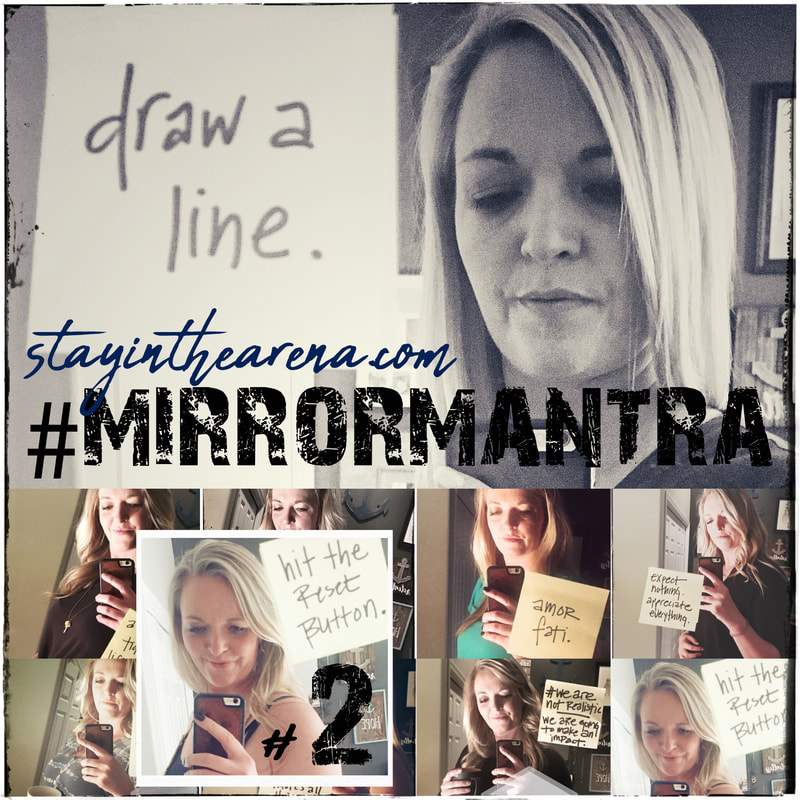 Several years ago, I went through a really rough patch with my hydrocephalus, where I had a total of 4 brain surgeries in less than 6 months. It was a pivotal point in my understanding of what living with hydrocephalus was going to be. Suddenly there was a new reality, that these surgeries could come in clusters… and that no matter how healthy I was otherwise, the bottom line was simply whether or not my brain would decide to accept and heal from the shunt surgeries that are required to keep me alive. It was during this time that I learned a valuable lesson. Even though I had zero control over how my brain was responding to the shunt, I found that I had complete control over my own reaction to these setbacks and repeated surgeries. Controlling my reaction really controlled my overall experience. Going forward from that point, I made a conscious decision to tell myself that this was just required maintenance. When the shunt needs to be repaired or replaced, I tell myself to “hit the reset button” and start over again. I’m not suggesting that I downplay the fact that this is brain surgery – believe me, it’s awful. But I do my best to keep it in perspective. I have often explained to my friends and supporters that if I treat brain surgery like it’s a giant catastrophe, my life will feel like one giant catastrophe. For the last several years, I have had brain surgery again and again – and for now, there is no guarantee that this frequency will let up. So, when something goes wrong with my shunt, I do everything in my power to take it in stride mentally. Controlling my emotional reaction makes it easier to navigate the physical challenges that are inevitable. This week I had my 22nd surgery related to hydrocephalus. This time it was a laparoscopic procedure to re-route my distal (abdominal) catheter, which was wrapped around my liver and rubbing on my diaphragm. As usual, it was a long and painful process to diagnose and work through this setback, and I’m relieved to once again be safely on the other side of surgery. It will take me a little while to get my energy and strength back to where I was pre-surgery, but I am ready to put in that work and move forward. Each day, I remind myself that the way I experience my own life is completely under my control. I am strong. I am healthy. I am capable. I am loved. And I am in relentless pursuit of everything that’s important. Hit the reset button. Am  In the late summer of 2003, a vicious forest fire ripped through central Oregon. When it was finally contained after 34 days of incredible battle, the B&B Complex fire had left a devastating mark on over 90,000 acres of pristine woodland. That summer, I spent a week teaching at a music camp in Sisters, Oregon. I’ll never forget the feeling of being so close to such a massive and powerful fire. The air was thick and smoky, and it felt like you could cut it with a knife. Large forest fires often create their own weather patterns, and the atmosphere felt volatile and unpredictable, as storms would rage through for several minutes at a time. The little mountain town that is usually crawling with tourists all summer long was dead, except for the thousands of woodland firefighters who were camped nearby. Fifteen years later, the Santiam Pass still shows the deep scars of that fire. Since my medical team is in Bend, I drive that stretch of highway often, and in all seasons. With any long drive that you make repeatedly, you start to get the rhythm of the mile markers. I know exactly where the cell phone and satellite radio signal coverage cuts in and out, where all the passing lanes are, and the precise point at which you feel like you’ve left the Willamette Valley and officially made it to the mountains. The thing that I love the most about the drive from Salem to Bend is the way the terrain changes so much along the way. From the farm fields and orchards in the valley, to the lakes and huge evergreen trees in the mountains, no matter what time of year you make the drive the scenery always breathtaking. Then when you get up onto the pass, and you see the acres and acres of land still affected by that incredible fire, it’s shocking. Thousands of burned trees stand like charred scarecrows, with their arms stretched to the sky. In the winter months, when the snow is on the ground and the skies are gray, the 10 miles or so of skeleton trees seem more eerie. Last weekend as I drove over to my neuro appointment, I suddenly noticed how much regrowth has started to happen in the pass. It has taken a long time, but the ground cover is vibrant and healthy… bright green against the blue sky, with summer wild flowers scattered among the trees. The mountains stand solid, strong, and unchanged, and the burned trees create a charcoal picture frame for all of this natural beauty. As I drove, it dawned on me that this regrowth is a perfect metaphor for life after challenges. I often speak about the power and peace that comes with accepting the fact that you are going to be different and changed on the other side of major life events – whether that is a new diagnosis, brain surgery, or a relationship change. Sometimes those events leave us feeling like this forest land – devastated and burned out. But faith is the confidence in things unseen-- the belief that eventually the landscape will grow and flourish again, if we simply keep standing tall – reaching for the sky with everything we have left. Pain is going to change you. You’re going to be different on the other side, and that’s ok. We’re ok. We are HEALING. The storms pass, and the wildfires die. The soul remains, and the heart will stay strong if we will it to do so. Be willing. Find beauty in the broken. Love, Am for erika #we. 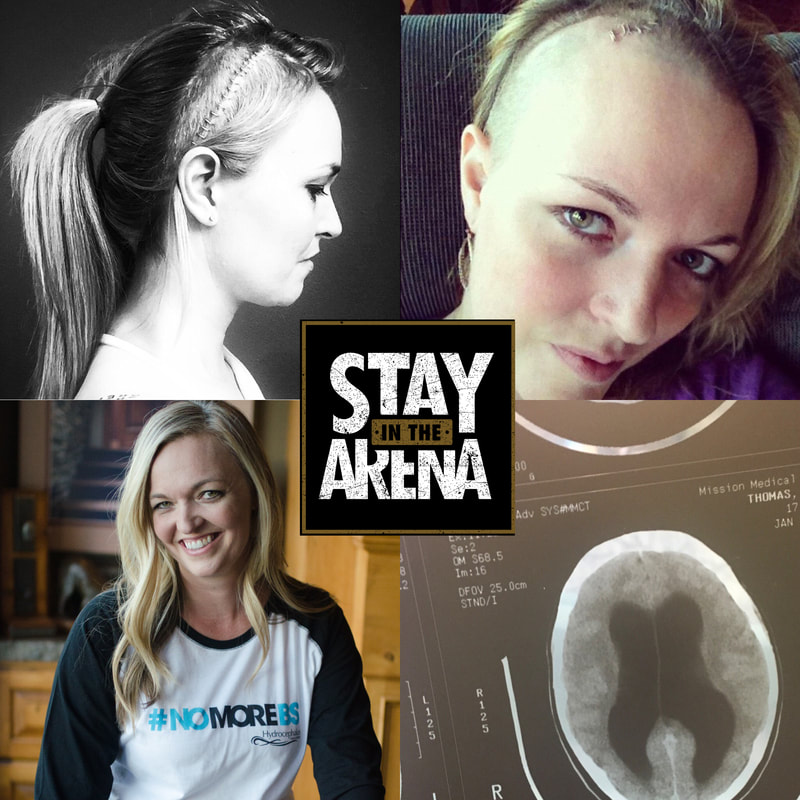 In January of 2016, I wrote a blog post titled “When are they going to get this thing figured out??” I had just established my website the month before and I had no idea how much sharing that one piece of writing would change my life. At the time, I was recovering from back-to-back shunt surgeries, and I posted it primarily to answer the common questions about hydrocephalus that I received from my own family and friends. But it was also a bit of a personal rant… the things I needed to say, in my own plain-English, non-technical words, to help me process what I was going through. Perhaps, because of that rawness, it definitely hit a chord in the community – with literally hundreds of people contacting me and messaging me. And since that initial post, I have reposted it every time I have had another brain surgery. Over the past two years, it’s been shared all over the internet, and read more than 20,000 times total. This week, I will be undergoing another shunt revision surgery – my 21st brain surgery. As shocking as that is for my family and friends, it’s not shocking for many people in the hydrocephalus community, who have walked a parallel path. While I am certainly hesitant and naturally apprehensive about going through this process again, I have complete confidence that my team has put incredible care into making this decision. And even though I’ve been really sick off and on all year and my pain is high, I’m physically and mentally strong right now, which I know will make a difference. I am well supported and we are focused. That original blog post is still very applicable today and I’m still humbled that it has touched so many people around the world. But today, I decided to do an updated version with the same concept. These are the 10 most common questions I get regarding my condition and these are my own raw, unfiltered responses to these questions. More or less, I wanted to answer these questions as if we were sitting together and you were asking them. I hope that in some way, by sharing these experiences and thoughts, I can provide you with some comfort and information. Knowing that there are others out there who are going through similar experiences is one of the most incredible things that the internet has the power to provide. And when you can get some positive input in regards to a very negative experience, it can truly change your path. That being said, I have to remind you that I am not a doctor or any type of medical professional, and this is not intended to be educational at all. It is simply my own answers, about my own diagnosis and experiences. As we move forward towards better answers for hydrocephalus, may we always remember that the credit belongs to the man who is actually in the arena, willing to stay, and battle – even when he fails again and again. May we band together in solidarity and strength, carrying those who need support, and remembering every day that the only thing that truly matters is human connection and trust. 1. What is hydrocephalus? Hydrocephalus is defined as an abnormal accumulation of cerebral spinal fluid (CSF) in the ventricles of the brain. When I explain it to people, I tell them that my brain does not drain spinal fluid properly. I developed obstructive hydrocephalus in my teens and was diagnosed at age 17. There is currently no cure for hydrocephalus and all treatment options include brain surgery. For more information, visit www.hydroassoc.org 2. Why have you had so many surgeries? The most common way to treat hydrocephalus is with a shunt, which is a valve and catheter system that diverts the fluid from the brain where it has built up and deposits it elsewhere in your body, where it can be absorbed. Hydrocephalus is shockingly common – even though many people have never heard of it. In the United States alone, there is a hydrocephalus related surgery every 15 minutes and it is the leading cause of pediatric brain surgeries. While some patients are able to go many years without trouble with their shunt system, statistically, 50% of all shunts fail in the first two years. That being said, there are a lot of us that have a really hard time with our shunts – the only way to fix them or replace parts is brain surgery. Click here for more information on my medical story. 3. Why don’t the surgeries work? Honestly, this is a frustrating mystery and I think every neurosurgeon in America would tell you that. Again, I am not qualified to answer this question, but there are many reasons a shunt (or ETV) will fail. They occlude (clog), the catheters get brittle and break, they come unhooked, etc. I have averaged 3-4 shunt surgeries a year for the past several years – until this last one, which lasted almost one year. 4. Who is involved in your care? I have been absolutely blessed and have put together an incredible team of physicians and therapists over the years. Of course I have a neurosurgeon, a primary care physician, and a pain management doctor. In addition to that, I have a strength coach that is very involved in my care, and a mental coach. When people ask me about how I manage my hydrocephalus, I tell them it takes a village. I have more information on the Resources page of my website, as well as the Hydro Treatments & Therapies page. 5. How do they decide to do another brain surgery? My neurosurgeon makes the decision to operate only when he feels like that is the only remaining option. He has been my surgeon for a number of years and he knows me very well. I feel like this has always been an advantage for me, because he knows what I function and look like when I’m doing well, versus when I am having serious issues. From time to time, he has consulted other neurosurgeons to look at my case and I always appreciate how thorough he has been. In my opinion, the most crucial decision you make is to establish care with a neurosurgeon who is a good fit for you. I personally travel 3 hours from where I live to see mine, because he is someone I trust and can communicate with. It has made all the difference in the world for me. 6. Is a shunt the only option for treatment? Some patients are candidates for a procedure called an Endoscopic Third Ventriculostomy (or ETV). Whether or not a neurosurgeon may decide to go with this option rather than a shunt, has to do with the patient, the neurosurgeon, and primarily the cause of the hydrocephalus that they have. It’s not an option for certain types of hydrocephalus. I had this surgery when I was 19 years old and while it is still viable today, my brain also needs a shunt to keep up. 7. How do you prepare for brain surgery (assuming it’s not an emergency surgery)? I try my best to prepare for surgery by getting things organized to the best of my ability. This includes unplugging from my job as much as possible, getting some good food options prepped, and making sure I have someone to stay with me during the process. In addition, I work on mentally preparing myself for the process, using visualization, meditation, and affirmation. It’s incredibly important for me to go into surgery feeling relaxed and confident in my team. There is always uncertainty with brain surgery and staying mentally in control of my thoughts and emotions are very important. 8. What are the concerns and risks? As with all surgical procedures, there are risks involved. The concerns can also change from surgery to surgery and from patient to patient. But in my case, there has always been a high level of concern about the risk of infection and seizures. I have had a lot of trouble with my head wounds sealing up as well, so there are concerns with wound infection. 9. What is the projected or estimated recovery time from your shunt revision surgeries? The correct answer to this question is that it’s different for every patient and for every surgery. I have had many shunt revision surgeries that have had similar recovery timelines, but then I’ve had others that have been much easier or much harder. That being said, in my own experience, I would say that my average recovery time to get back to 100% strength and energy is about 6 weeks. I am very physically active and I do my best to return to activity as soon as possible. I usually am off of work for about 4-5 days, then slowly integrate back into daily life. 10. How does this process affect the people who are close to you? I am incredibly fortunate and have an amazing network of family and friends that support me. I know that it is frustrating and painful for them to watch me go through the repeated surgeries and the chronic pain issues that come along with them, but I am thankful beyond words that they choose to walk beside me on this path. In my life, I see that as one of the blessings I have received and that I never take for granted. As a family, as a tribe, and as a team, we go through all of this together. We win and we lose together. In my blogging, I often use the hashtag #we. This is because when I speak of my journey, I use the term “we” as an authentic representation of the fact that I don’t do this alone. I walk this road with the most brilliant and loyal humans, and I am grateful. To my Loves: We are ready. We fight. We love. We stay in the arena. Here’s to the relentless pursuit of everything important. Thank you for holding my head and my heart. Peace, Amy 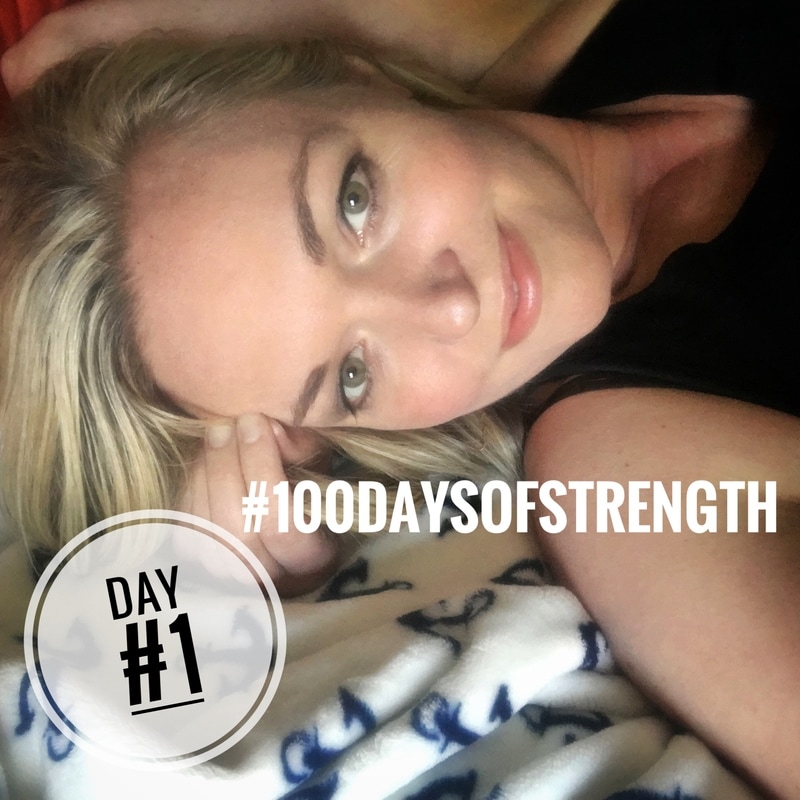 Towards the end of last summer, I was challenged by my neurosurgeon to dedicate 100 days to getting as strong as possible, physically & mentally. He hoped that during that time, I would be able to stay healthy, and I would go into the fall ready for what we already knew was an inevitable shunt surgery. So, along with a couple of my friends and my strength training team, I jumped into an incredible 100 day journey. I committed to posting once a day on my Instagram account— documenting, recognizing, and acknowledging the things I did every day to become stronger. It was really fun on some days, and really challenging on others. Unfortunately, my brain didn't cooperate, and I had my 16th brain surgery on the 30th day. I took a few days off, then started up again— pressing myself to find the strength in the many tiny victories of recovery… and using my tears to fuel my drive for better days. I finished my 100 days of strength on Thanksgiving Day. On that day, I reflected on the path I had followed for those three months. The nights in the gym, and the talks with my friends. The brain surgery, and the recovery that followed. The quotes that pushed me to keep going, and the daily battle to stay in the arena. I had finished the challenge, and I was stronger. In that moment of reflection, I was so thankful that I have people in my life who care enough about me to push me relentlessly, and who are never afraid to walk with me through the valley of the shadow of death. We do it together, and we come out stronger. I’ve had an incredibly difficult year. I’m recovering again from surgery, and it’s been a difficult few weeks. But, today at lunch time, I was looking through the photos on my phone, and I stumbled upon the video montage of the 100 Instagram posts, that I had uploaded to YouTube. It made me feel a little emotional, because it was a reminder of something I have learned this year… That I may feel like I’m struggling right now, but I am in total control of myself, my thinking, and my actions. If I choose to be strong, I am strong. And I choose strength. Today, I’m going to start a new #100daysofstrength — and this time, it’s different. Last time, Dr. Yundt challenged me, and this time, I am challenging myself. I’m not able to work out for another week or so, but every day I will honor the journey to more mental, emotional, spiritual, and then… physical strength. Follow my #100daysofstrength on Instagram @stayinthearena Much love, Amy |
AuthorMy name is Amy but friends and family call me Am. I am a lover of dogs, good whiskey, and strength training. I'm a brain surgery survivor (x31), a fiddle player, a construction designer, and a boxing enthusiast. I have six real siblings, and five fake brothers. I love deeply, and consider my close friends to be family. Archives
February 2022
Categories
All
|



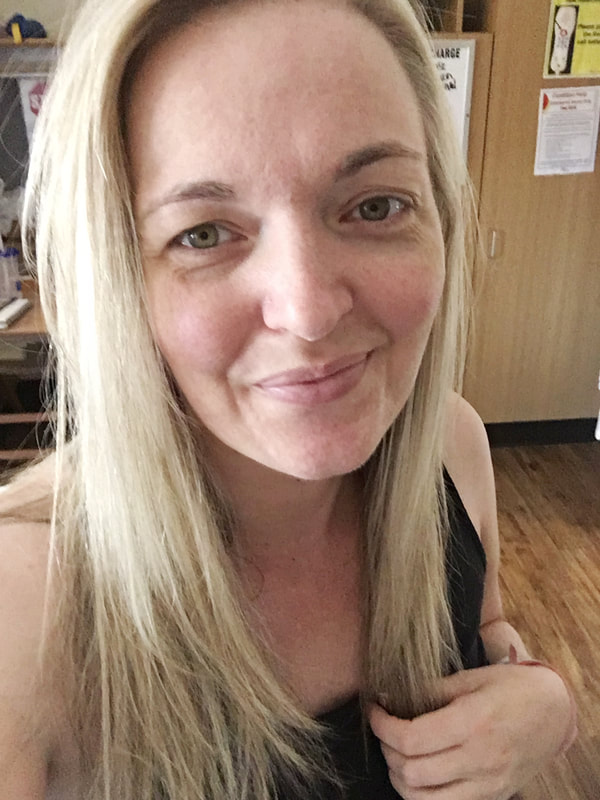
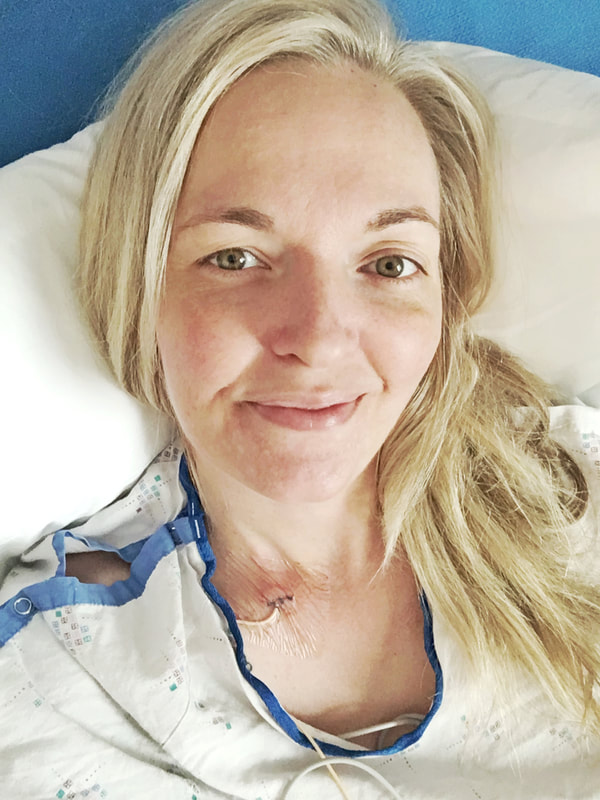
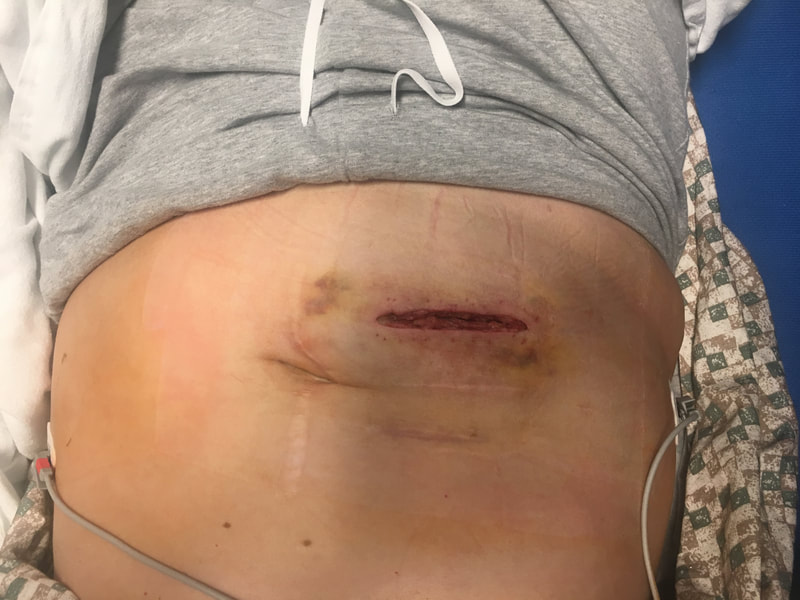
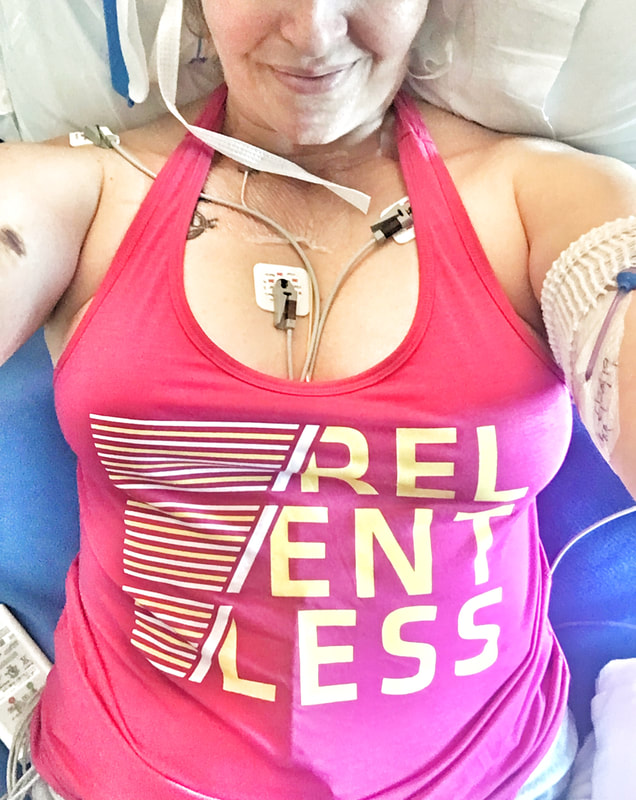
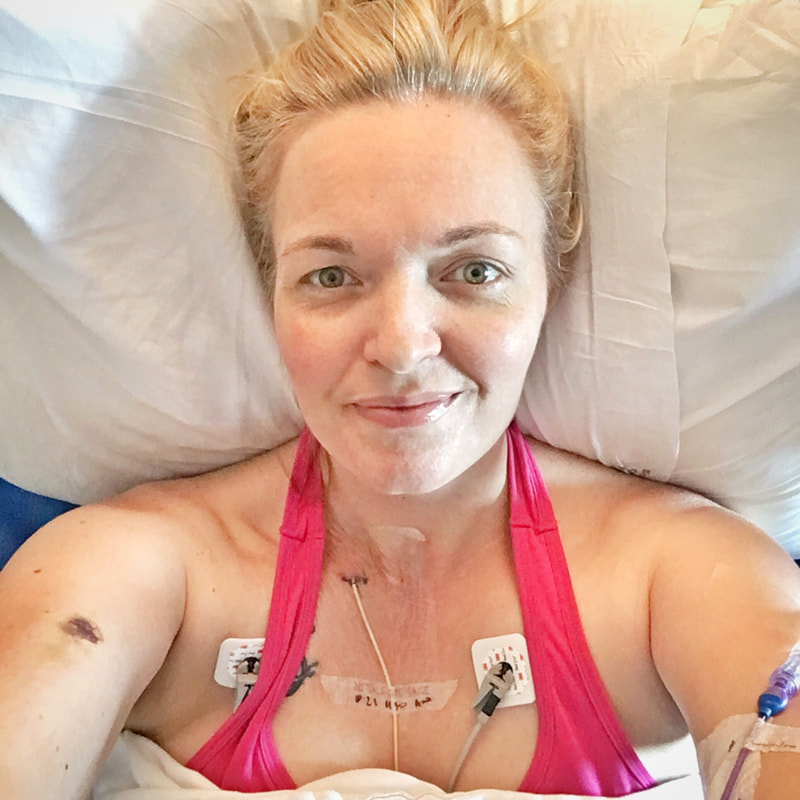
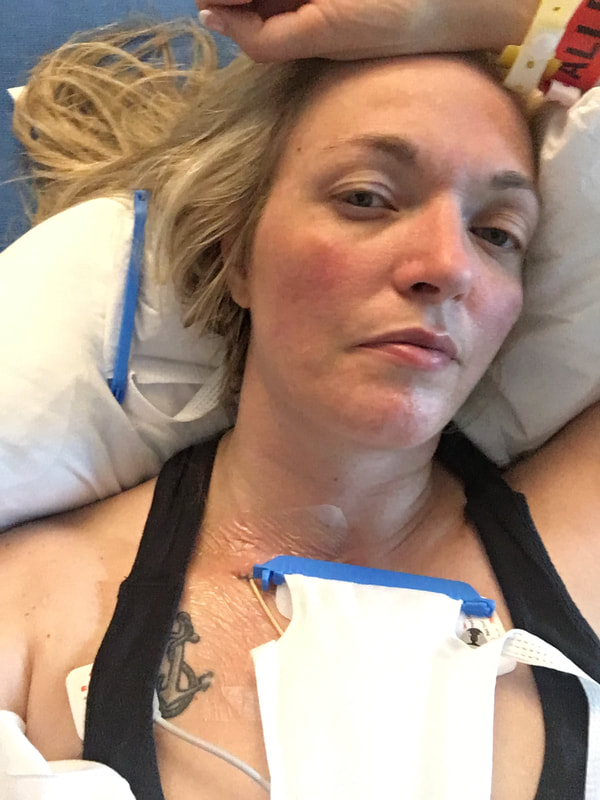
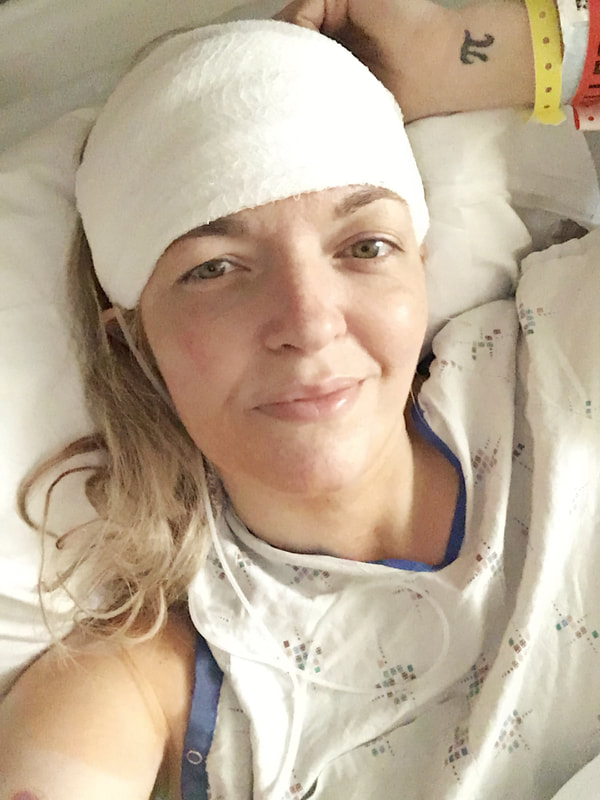

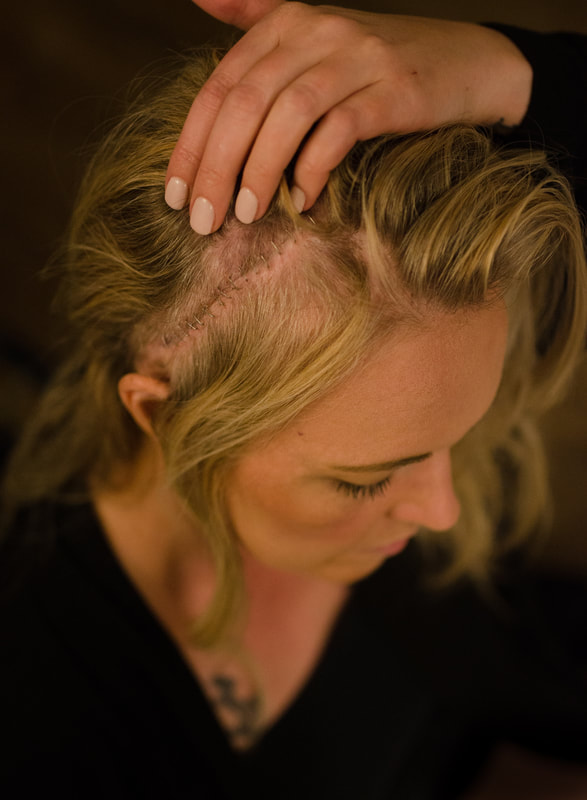
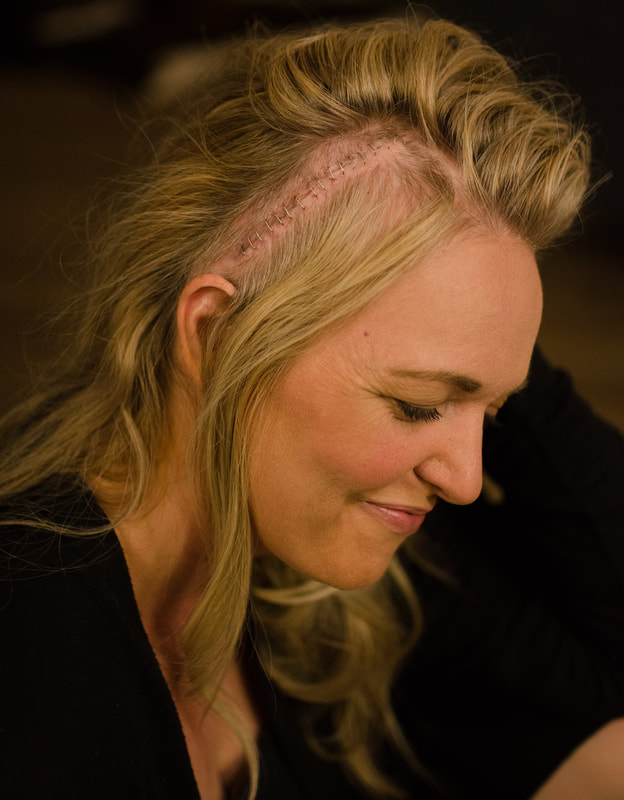
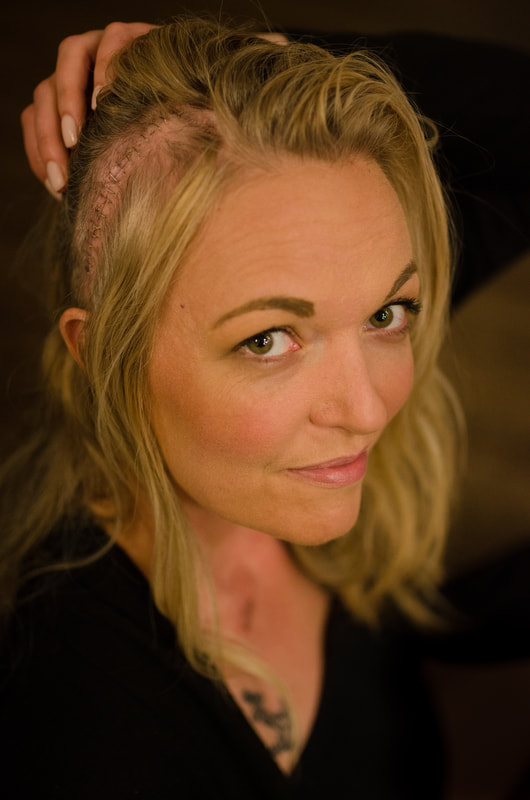
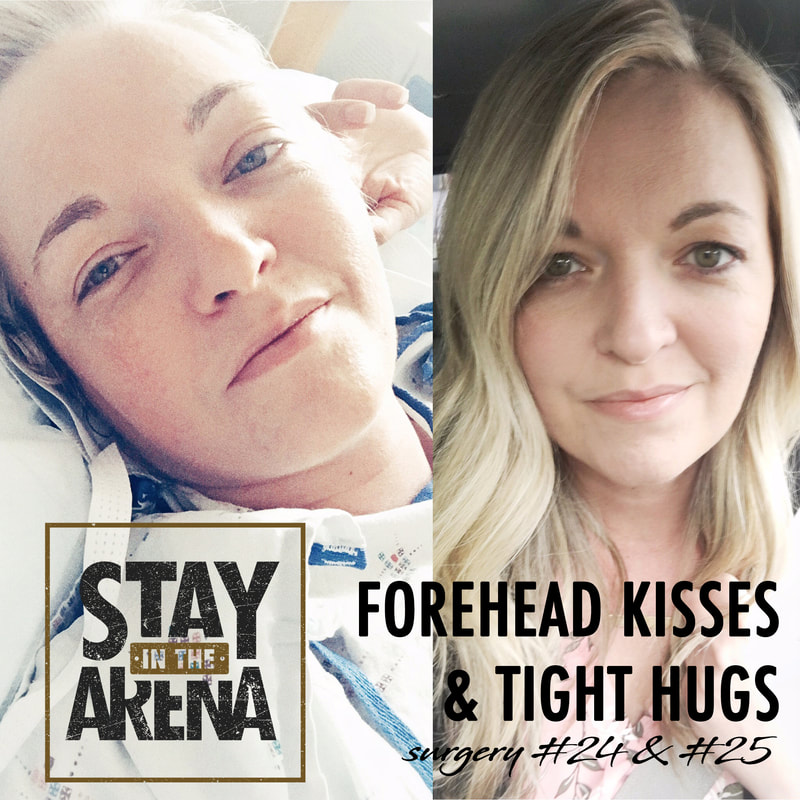
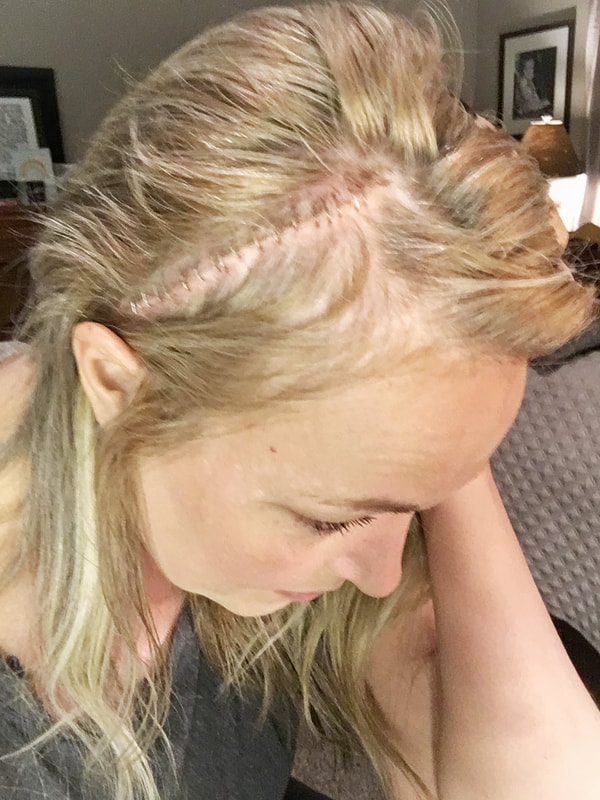
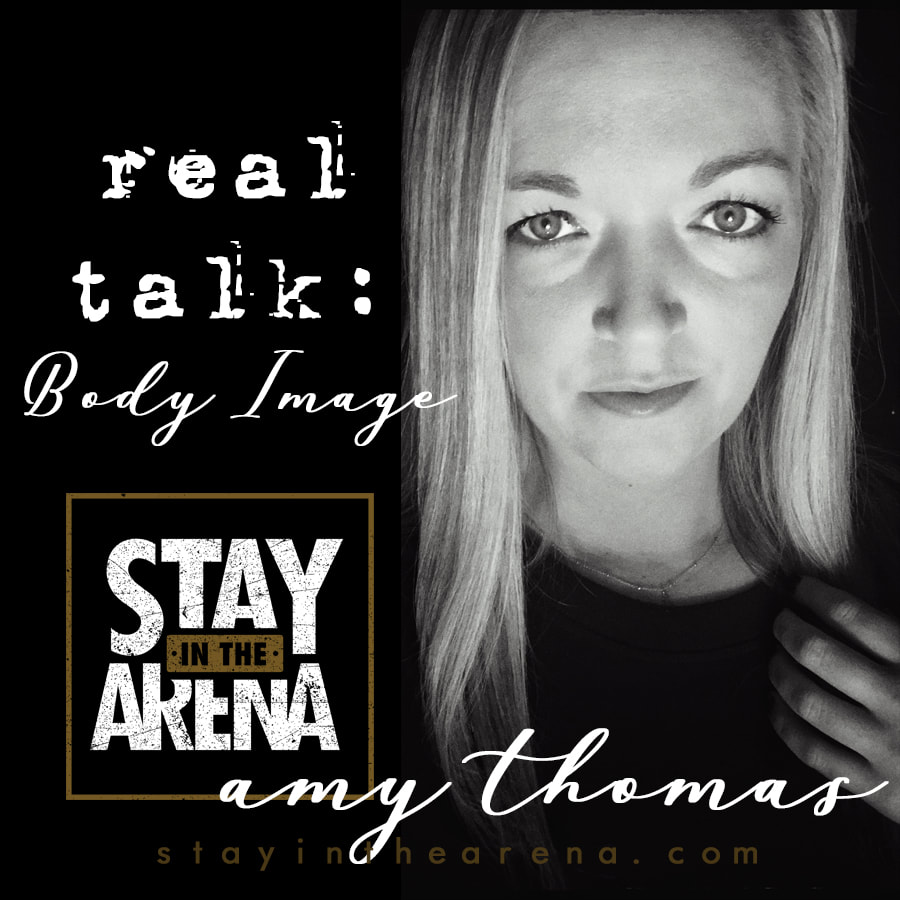
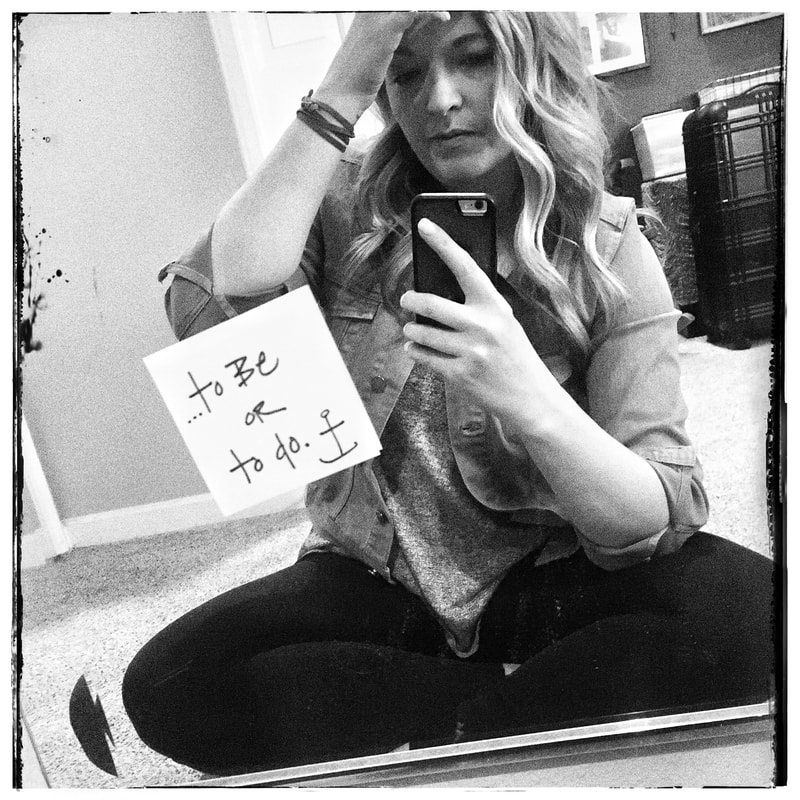
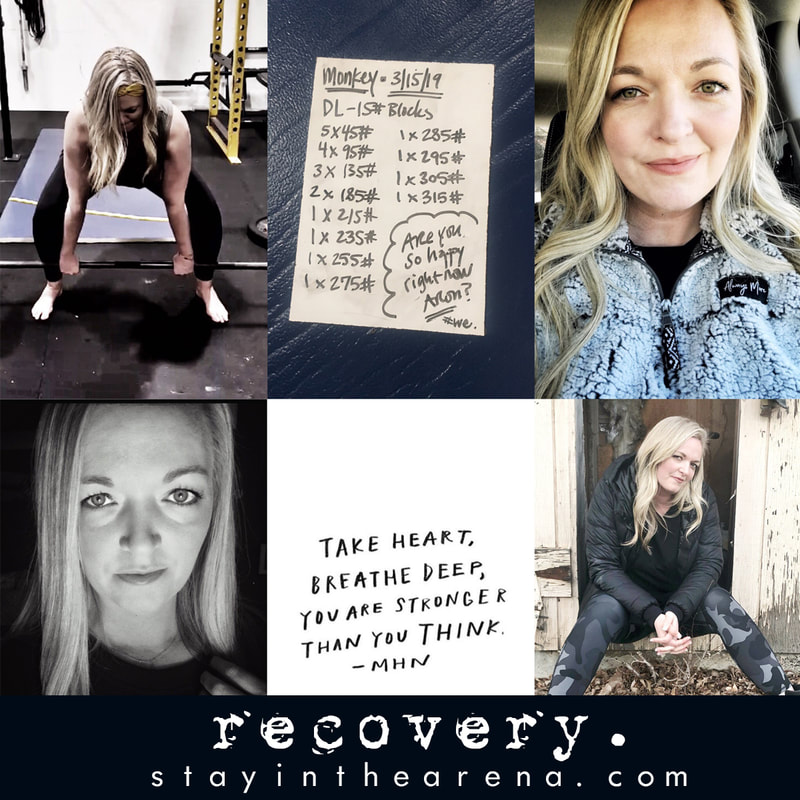

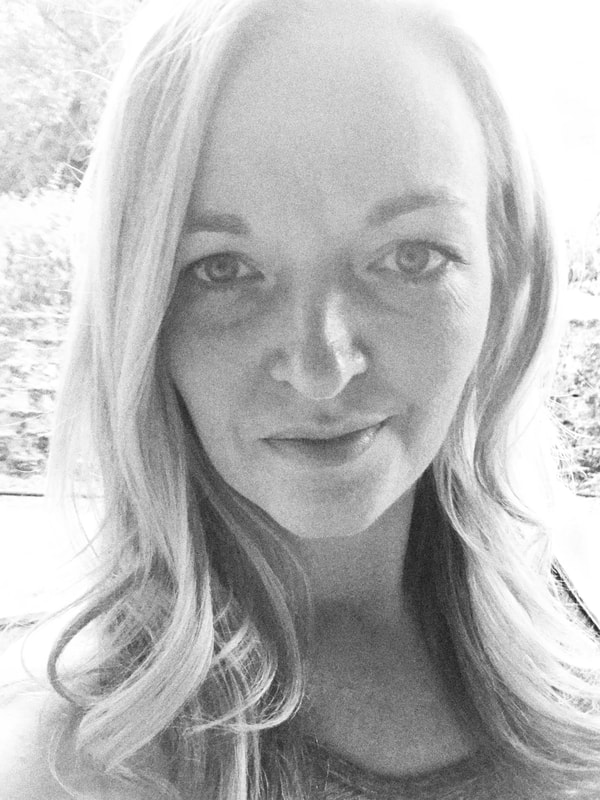
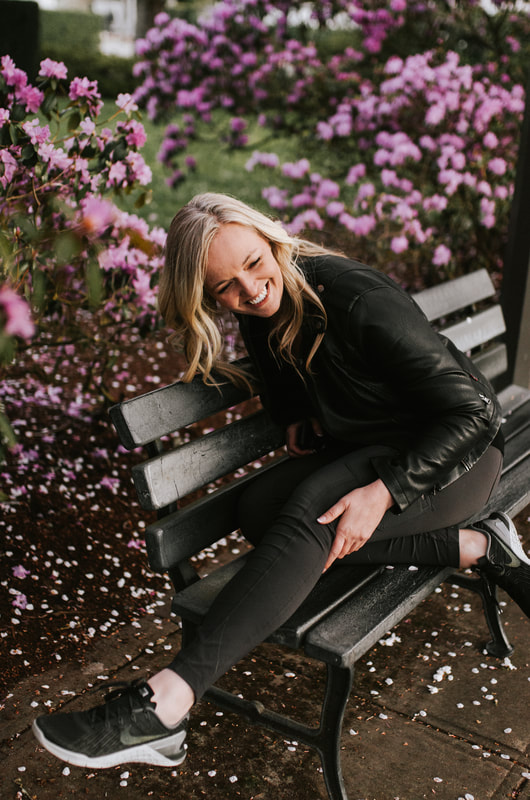
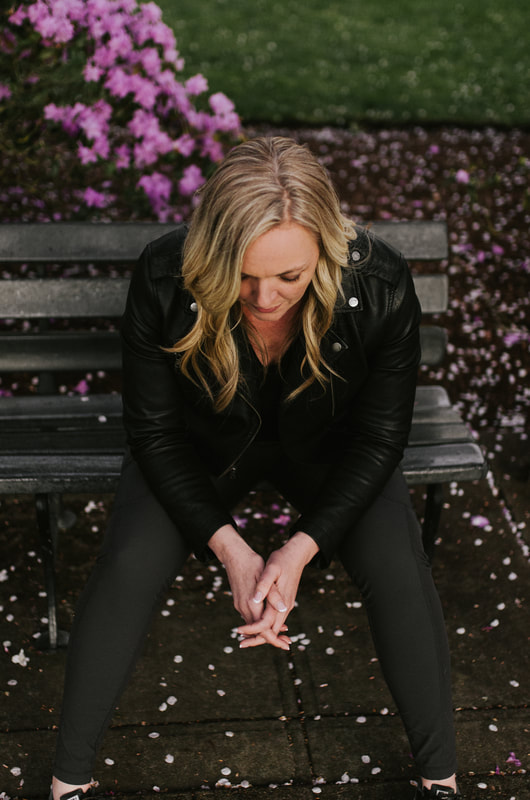
 RSS Feed
RSS Feed